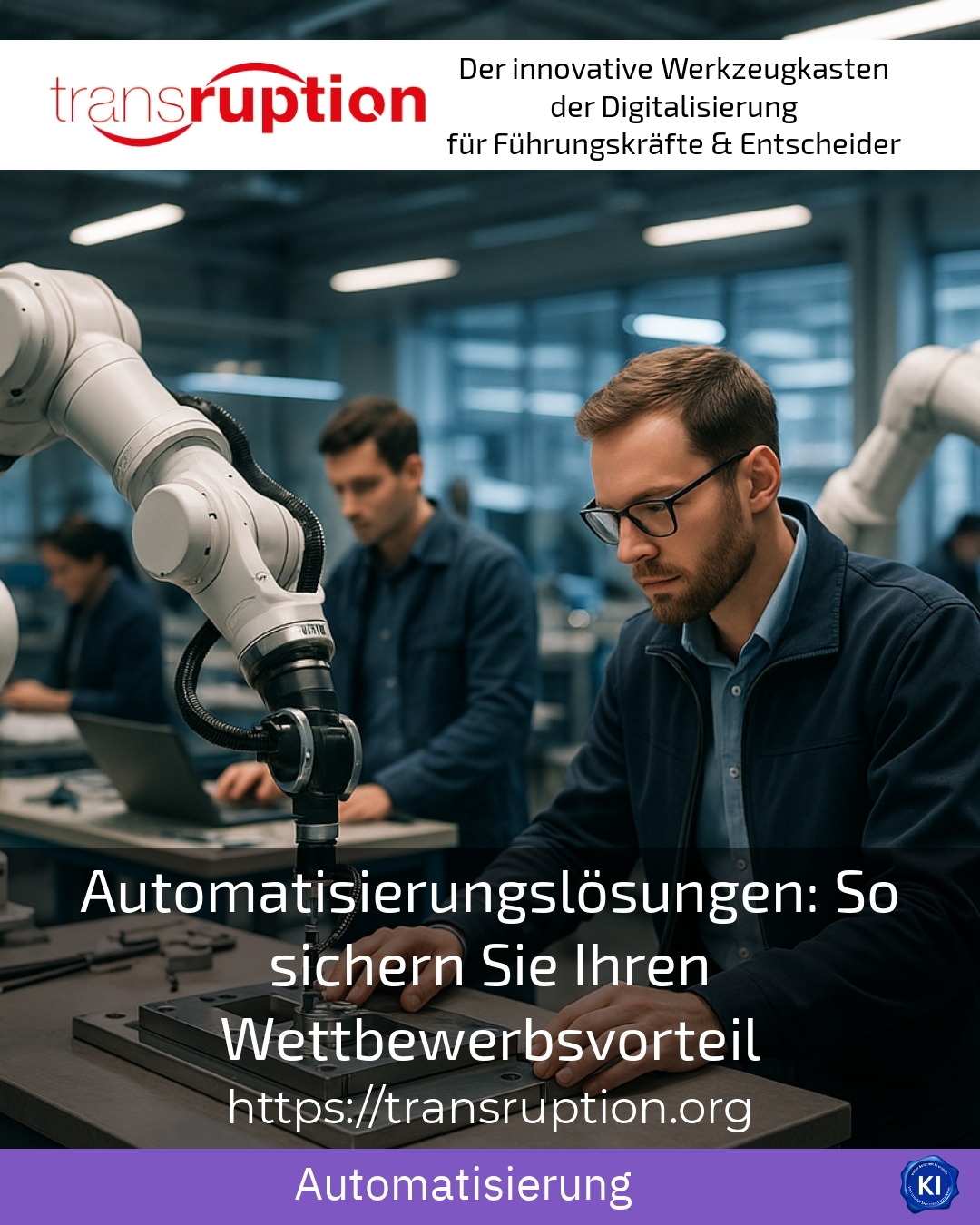Automation solutions play a key role in keeping companies competitive. They help to organise processes more efficiently and react flexibly to changing market requirements. Especially in times of increasing digitalisation, automation solutions provide impetus for optimising processes and sustainably increasing product quality.
Automation solutions as the cornerstone of modern business processes
In many companies from different industries, automation solutions relieve employees of repetitive tasks. This allows resources to be used more specifically for more complex tasks. For example, manufacturing companies use robots to take over assembly or welding work, which increases production speed and improves quality.
In accounting and financial accounting, systems automate the capture and processing of incoming invoices. By using artificial intelligence, such as adaptive OCR programs, documents are quickly digitised and assigned to relevant documents. This not only optimises processes, but also minimises sources of error.
Automation solutions are also convincing in logistics thanks to the use of driverless transport systems. These transport goods efficiently and safely through the warehouse, reduce operating costs and increase customer satisfaction.
Flexibility and increased productivity through automation solutions
Modern automation solutions are flexible and customisable. This means that companies can quickly adapt their production processes to new market requirements. This allows them to remain competitive, even with rapidly changing customer requirements.
In industrial production, industrial robots and cobots increase machine utilisation as they can work around the clock. This speeds up processes and shortens delivery times. The more precise control minimises rejects and increases product quality at the same time.
Small and medium-sized companies are also increasingly benefiting from automation solutions. They report significantly shorter throughput times, a reduced error rate and improved production planning. This enables more sustainable utilisation of existing resources.
BEST PRACTICE at the customer (name concealed due to NDA contract) A medium-sized mechanical engineering company was able to organise its personnel deployment more efficiently thanks to individual automation solutions in the area of assembly. At the same time, production capacity increased as robots took over serial tasks and skilled workers were able to focus on more complex activities.
Practical examples from different industries
Automation solutions are widely used across all industries and can be customised to meet specific requirements. In the food industry, for example, they help with packaging and quality control. Sensors and image processing systems automatically detect errors and ensure consistently high product safety.
When it comes to IT, many companies rely on automated reporting. These are generated regularly without manual effort and provide valuable insights into system performance. This reduces response times in the event of faults and promotes operational efficiency.
In HR, companies are automating routine processes such as recording employee feedback or the onboarding process. This increases employee satisfaction and loyalty because administrative hurdles are minimised and there is more time for personal support.
Safety aspects and quality optimisation through automation
Automation solutions also contribute to increased safety in the workplace. They take over dangerous or monotonous tasks and thus reduce the risk of accidents. At the same time, automated systems minimise errors and ensure consistently high quality. This is essential in chemical or pharmaceutical production, for example.
Predictive maintenance of automated systems is another advantage. Sensors continuously monitor the condition of machines and report potential faults at an early stage. This prevents unplanned downtime and maximises uptime.
BEST PRACTICE at the customer (name concealed due to NDA contract) In a manufacturing company, the introduction of an automated maintenance system reduced machine downtime by a third. Employees were able to concentrate on value-adding tasks and product quality improved measurably.
Automation solutions as support with transruption coaching
Many companies report that they face a variety of challenges when introducing automation solutions. This is precisely where transruptions coaching comes in as supportive guidance. It accompanies projects relating to automation solutions, provides impetus for process design and promotes employee acceptance.
In practice, it has been shown that the early involvement of experts and regulated change management processes significantly increase the success of automation projects. Transruption coaching helps to recognise blockages, improve communication and make the change sustainable.
BEST PRACTICE at the customer (name concealed due to NDA contract) A company in the mechanical engineering sector has achieved better internal coordination and more commitment in the team through coaching during the introduction of new automation solutions. Risks were addressed early on and solutions were implemented in a practical manner.
My analysis
Automation solutions are indispensable tools for strengthening the competitiveness of companies. They speed up processes, increase quality and create flexibility in production and administration. At the same time, they enable more efficient utilisation of resources and increase employee satisfaction by relieving them of routine tasks.
Accompanying advice, such as transruptions coaching, helps to manage change effectively and ensure long-term success. Companies that utilise automation solutions in a targeted and strategic manner can improve their market position in the long term and react flexibly to new challenges.
Further links from the text above:
The 10 best reasons for automation [1]
Automation explained - definition, examples and advantages [2]
Automation solutions & success factors [3]
Industrial automation - more efficiency & quality [4]
5 Advantages of automation solutions in the industry [5]
For more information and if you have any questions, please contact Contact us or read more blog posts on the topic TRANSRUPTION here.















